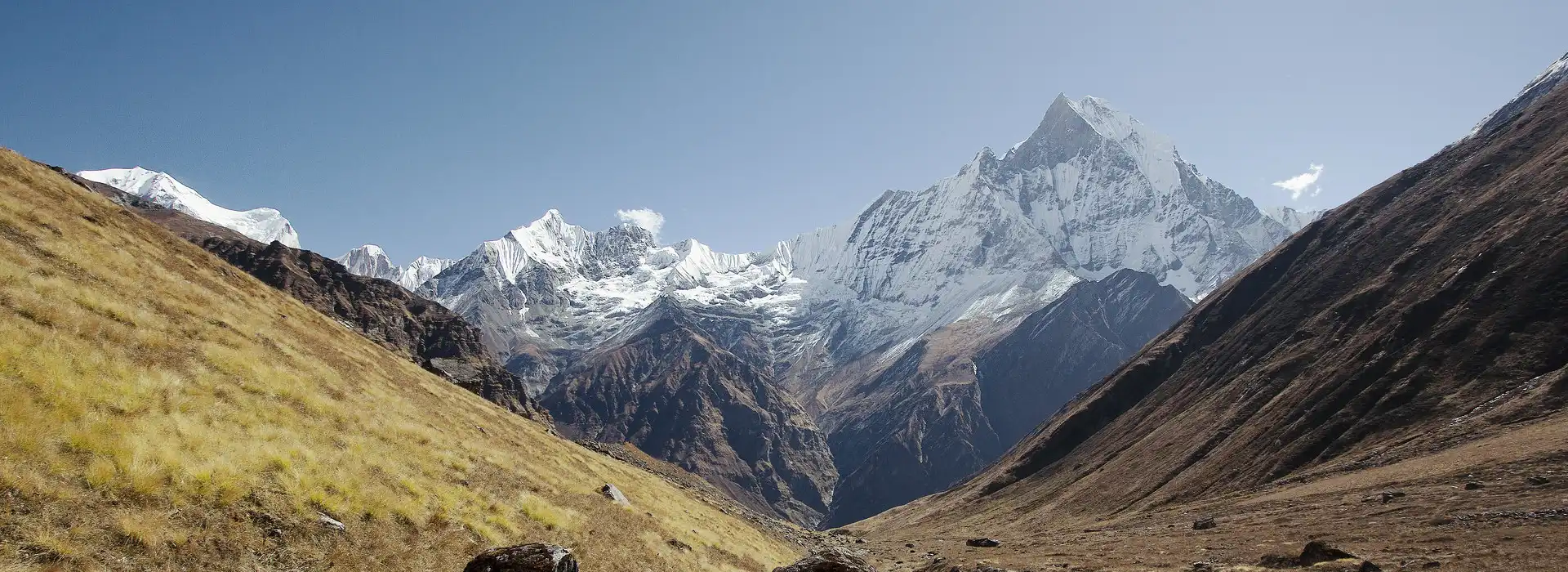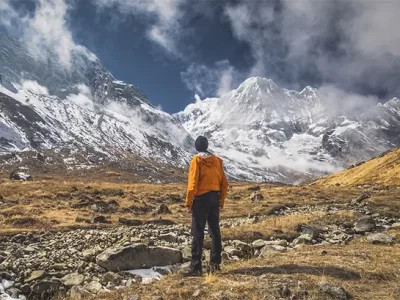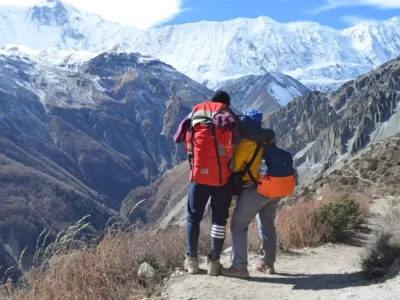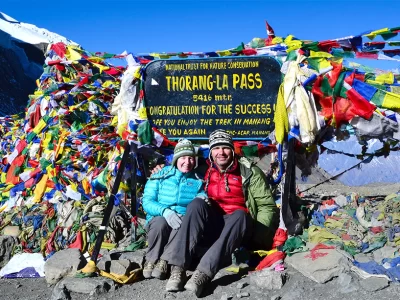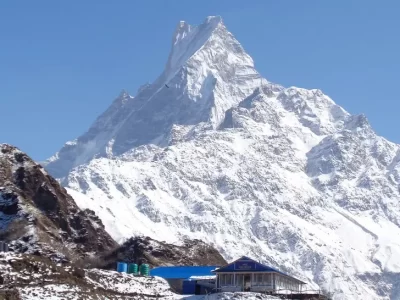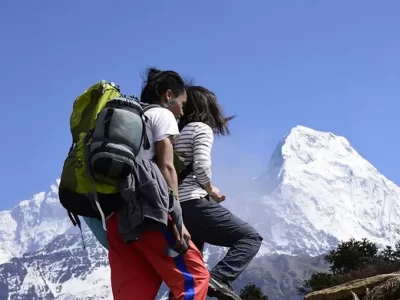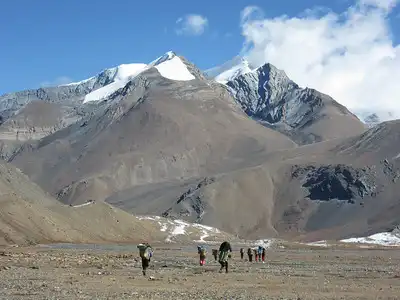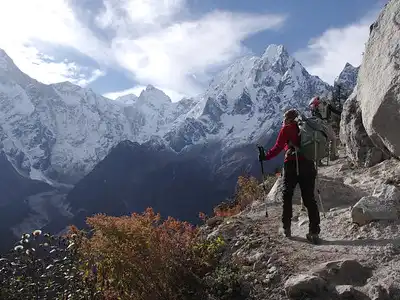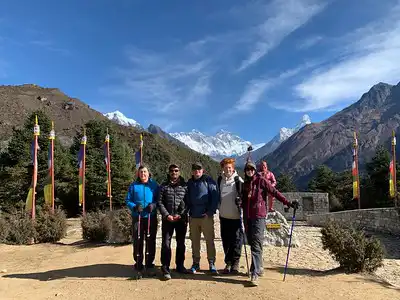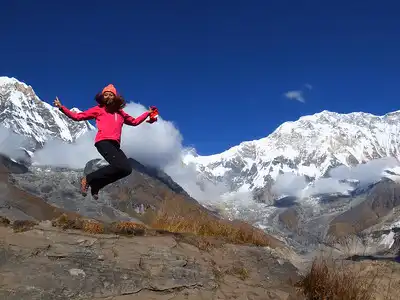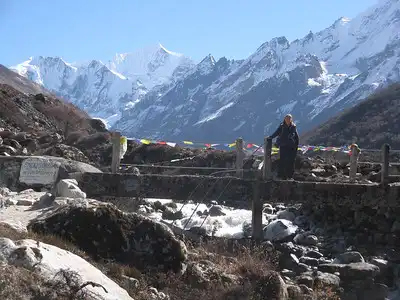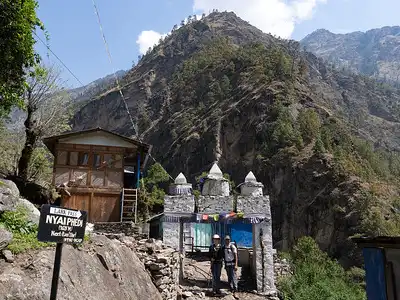You may be questioning the safety of the Annapurna Base Camp trek. To clarify, undertaking the ABC trek is Safe if you possess knowledge about the trail. For only two days of the entire trek, you will navigate areas prone to avalanches. The Annapurna Base Camp Trek, which lies in the heart of the Nepalese Himalayas, captivates hikers from all over the world with its breathtaking scenery, which includes peaks rising to verdant valleys. This trek, famous for its rugged mountain beauty, provides an engaging experience. However, Is Annapurna Base Camp Trek safe? It is a common question, reflecting adventurers’ concerns about the high-altitude environment.

The trek poses challenges such as altitude sickness, changeable weather, and isolated trails, making safety a crucial consideration. My experience trekking to Annapurna Base Camp underscored the necessity of preparing well and respecting the mountains. While traversing the Annapurna region, nature’s dual character—its ability to awe and its potential hazards—became apparent to me.
One day’s clear skies and panoramic views quickly gave way to sudden mists and treacherous paths the next, emphasizing the high-altitude trek’s unpredictability and the critical need for vigilance and readiness. This journey showed that safety on the Annapurna Base Camp Trek, although achievable, requires environmental respect, thorough planning, and an active approach to safety.
Annapurna Base Camp Trek
Annapurna Circuit Trek
Mini Annapurna Circuit Trek
Understanding the Annapurna Base Camp Trek
Geographic and Cultural Background
In north-central Nepal, the geographically diverse Annapurna region stretches across various elevations, featuring lush subtropical valleys starting at 600 meters and rising to arid landscapes above 4,000 meters, peaking with the Annapurna Massif.
Annapurna I, reaching 8,091 meters (26,545 feet), stands as the world’s tenth-highest peak within this massif. The region’s climates nurture a wide range of flora and fauna, including rhododendron forests, orchids, and the elusive snow leopard.

The Annapurna region also boasts a rich cultural diversity, with ethnic groups like the Gurungs and Magars populating the lower elevations, primarily engaging in subsistence agriculture and herding. Their villages showcase traditional Himalayan life, preserved through ancient customs and rituals.
In higher elevations, the Thakali people around Jomsom excel in trading and offer unique culinary experiences. The presence of Tibetan Buddhist monasteries and Hindu shrines throughout the area reflects a blend of religious traditions and practices.
Key Statistics about the Trek: Length, Altitude, and Duration
Traversing from the lowland villages with rice paddies to the glacial basins at high altitudes, the Annapurna Base Camp Trek covers roughly 110 kilometers (68 miles). However, the exact distance can vary based on the chosen route and starting point. Annapurna Base Camp marks the trek’s high point at 4,130 meters (13,549 feet), presenting trekkers with stunning views of the Annapurna range.
Trekkers typically spend 7 to 12 days completing the trek, depending on their experience, fitness level, and cultural exploration interests. This duration accounts for acclimatization time, which is crucial for avoiding altitude sickness. The trail, of moderate difficulty, accommodates individuals with good fitness, involving around 4 to 6 hours of trekking daily.
Best Time to Trek Annapurna Base Camp
The top opportunities for trekking to Annapurna Base Camp take place before the rainy season in the spring from March to May and the fall after the rainy season from September to November. In spring, the weather is mild, and the trails are lined with blooming vibrant rhododendrons, enhancing the visual experience.
Autumn brings clear skies and the best mountain visibility, aligning with the harvest season and colorful local festivals for a rich cultural experience. Both seasons offer stable weather, which is essential for a safe and enjoyable trek. Each season, however, has its risks. Spring and autumn are usually safer, but sudden weather changes can still happen.
These changes may lead to emergencies like altitude sickness, injuries, or acute mountain sickness (AMS). Helicopter services are more available during these peak seasons, offering a vital safety net for trekkers in distress. These times also attract the most trekkers, creating bustling trails and a lively atmosphere.
It is wise to secure comprehensive travel insurance that includes coverage for high-altitude trekking and emergency helicopter evacuations. Trekking through the challenging terrains of the Annapurna region ensures safety and peace of mind.
Mardi Himal Trek
Ghorepani Poon Hill Trek
Dhaulagiri Trek
Common Risks and Challenges
Is Annapurna Base Camp Trek Safe? Due to Altitude
Reaching over 4,000 meters (13,123 feet) on the Annapurna Base Camp trek presents a significant challenge, particularly for those accustomed to lower elevations. At these heights, the air’s oxygen level decreases as it becomes thinner, leading to common acute mountain sickness symptoms.
Symptoms such as headaches, nausea, fatigue, dizziness, and lack of coordination can occur and may necessitate a descent to lower altitudes to alleviate the condition. These altitude sickness effects can not only disrupt the trek itinerary but, in severe cases, may also require abandoning the trek.
Weather
Trekkers are welcome to join the Annapurna Base Camp journey at any time of year; each season brings with it its own set of difficulties and experiences. During the monsoon, trails become slippery with mud and are often infested with leeches, making the trek more demanding and necessitating preparation for frequent rainfalls.
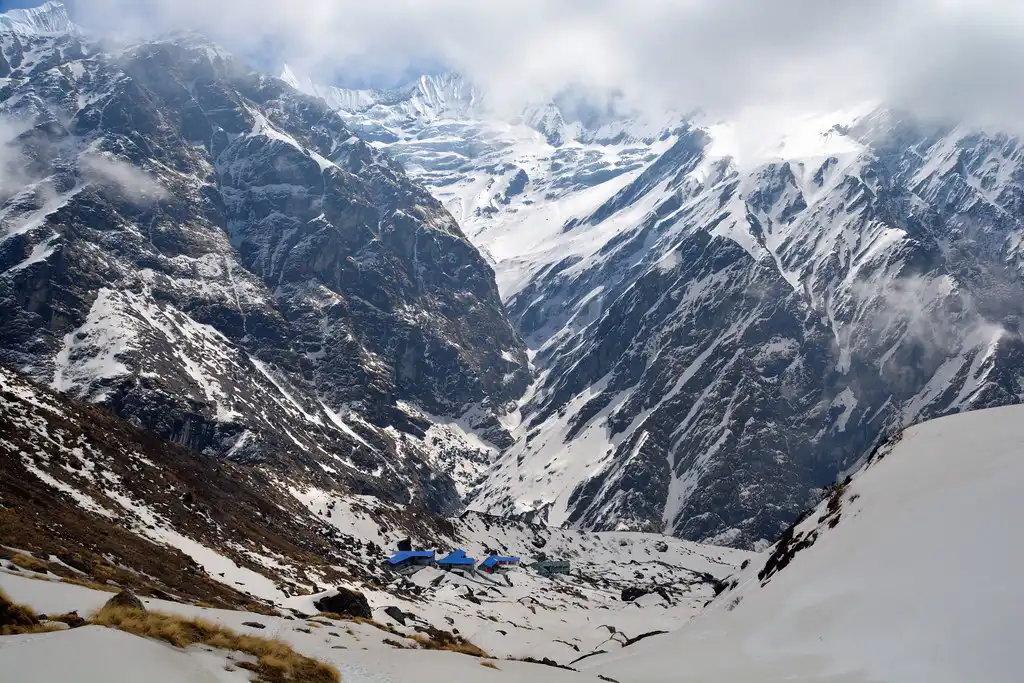
This season also increases the likelihood of landslides and trail obstructions, with flash floods being a common occurrence, especially when crossing the Modi Khola Valley’s suspension bridges. In contrast, winter brings extreme cold, with temperatures dropping below –10 degrees Celsius, challenging trekkers who have not prepared adequately.
The path often becomes icy, necessitating the use of microspikes or ice cleats. Additionally, the area between Deurali and Machhapuchhre Base Camp (MBC) poses a mild avalanche risk, emphasizing the need for cautious progress and weather awareness.
Terrain
The terrain of the ABC trek itself poses natural challenges, marked by steep climbs and descents throughout the journey. Frequent changes in elevation require trekkers to navigate up and down certain trail sections more often. The numerous stone steps, particularly dangerous after rain, significantly increase the risk of slipping and injury if not navigated carefully.
Ascending these steps demands extra cardiovascular effort and increases muscle activity beyond what is typical on flatter trails, while descending places considerable strain on the joints, complicating balance and increasing the risk of falls. Seasonal conditions can exacerbate these challenges, with certain trek segments featuring river crossings or demanding climbs further enhancing the trek’s difficulty.
Wildlife Encounters
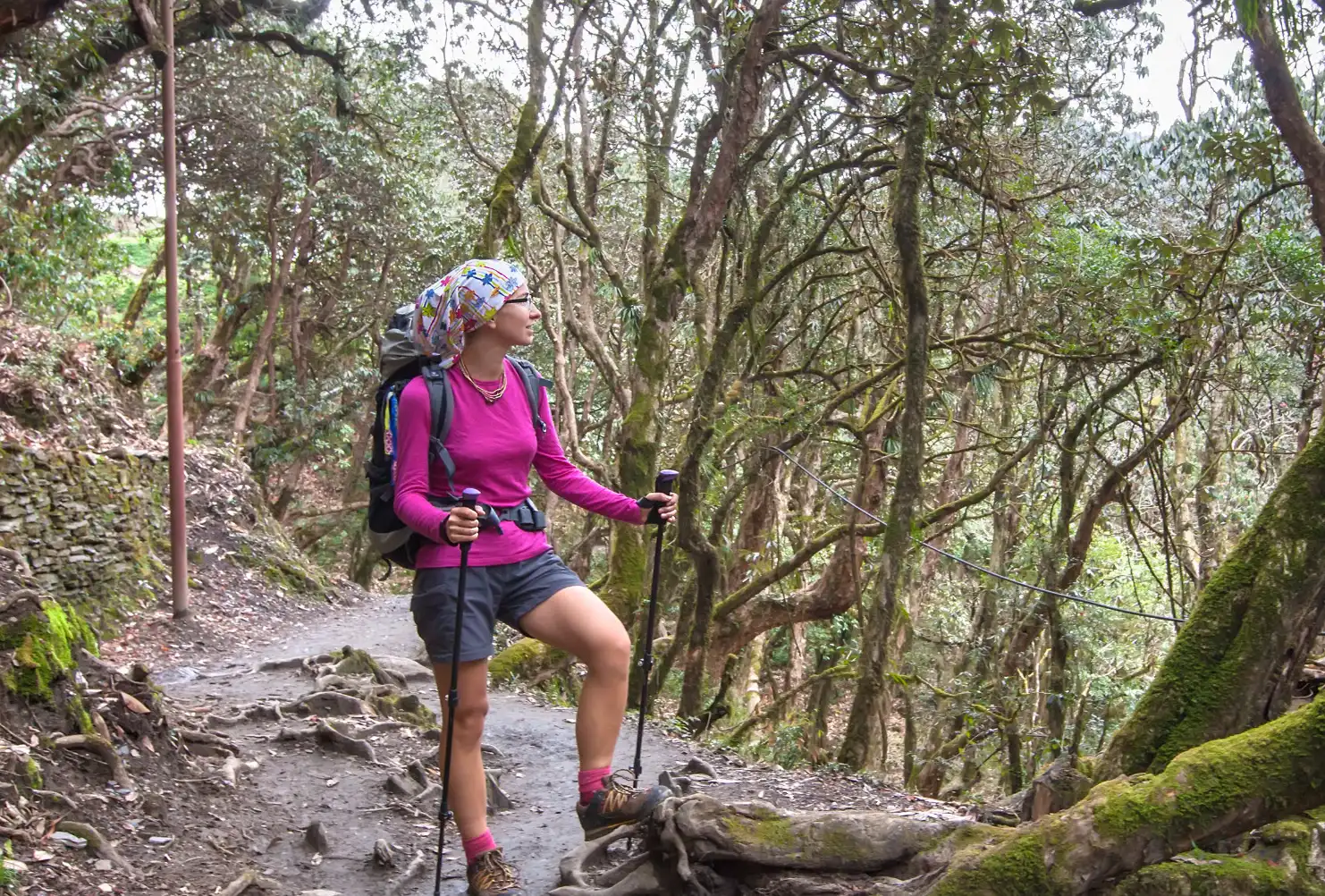
The region boasts a rich biodiversity, offering opportunities for wildlife observations along the trek. While encounters with wildlife are infrequent, it’s important to remain cautious. Observers should admire these creatures from afar to avoid disrupting their natural habitat and maintain the balance of the ecosystem.
Physical Challenges During the ABC Trek
The trek presents certain physical risks, influenced by an individual’s physical condition and the chosen season for trekking. The Annapurna Base Camp trek, although not requiring peak physical fitness, does necessitate a decent level of stamina.
Trekkers engage in extended walks daily across terrain that is moderately challenging. A slippery trail combined with demanding uphill climbs and prolonged downhill walks can lead to physical strain, particularly if one needs adequate fitness, appropriate footwear, and the right gear.
Minimizing the Risks on the ABC Trek
Ensuring a safe and enjoyable adventure in the stunning Annapurna region involves taking proper safety measures to mitigate the inherent risks of the Annapurna Base Camp trek.
Guide
Hiring an experienced and certified trekking guide ensures the highest safety on the unfamiliar routes of the ABC trek. With their experience and understanding of the regional weather patterns, guides can safely navigate trekkers, making informed route choices after assessing risks.
They are trained in first aid, capable of promptly responding to emergencies, recognizing early symptoms of altitude sickness, and advising on the safe pace for ascent. Guides can also navigate trekkers through alternate routes if necessary, especially during emergencies or trail obstructions, and know the safest rest spots for sudden weather changes.
Porter
A porter, like a guide, is invaluable for ensuring safety and comfort during the trek. They carry heavy backpacks, allowing trekkers to conserve their energy and maintain stamina.

By handling the gear, porters help prevent missteps and injuries on the treacherous stone steps and reduce the physical strain on trekkers. With Ace the Himalaya, trekkers receive support from both a knowledgeable guide and a porter, following ethical practices to avoid overburdening the porters.
Proper Packing
Successful and safe completion of the trek hinges on packing the right gear. Preparing for the ABC trek’s cold and unpredictable weather means including essential items like layered clothing, sturdy footwear, microspikes, and headlamps. Adding a shell jacket and a puffy jacket to your pack will also be beneficial.
Acclimatization
To avoid altitude sickness, understanding and practicing proper acclimatization is vital. The ABC trek includes a natural acclimatization process through its itinerary, such as the hike to Poon Hill, which helps prepare for the trek’s highest point. Stay hydrated, ascend gradually, and consider acclimatization medication like Acetazolamide, but only after consulting with your guide.
Prior Health Check-Up
Undergoing a full-body assessment before the trek is crucial to identify any potential health issues and confirm fitness for the trek. Emphasize cardiovascular and leg-strengthening exercises to tackle the steep inclines and declines of the trail, minimizing serious medical risks in the remote trekking environment.
First-aid Kit and Basic Knowledge
It is essential to include a well-stocked first-aid kit in your backpack, especially considering the limited medical facilities on the trek. While guides are trained in first aid, having your knowledge of first aid and emergency procedures offers an extra layer of safety.
Pre-trek Briefing and Communication
Participating in a pre-trek briefing provides valuable safety and acclimatization information. Reliable communication methods, such as local SIM cards or devices carried by guides, like satellite phones or radios, enhance safety by facilitating rescue efforts and emergency communications.
Travel Insurance
Obtaining travel insurance that includes emergency evacuation and repatriation provisions is crucial for trekker safety. This insurance should cover trekking activities up to 6,000 meters, ensuring access to necessary healthcare without financial strain in case of emergencies.
Additional Tips for Your Annapurna Adventure
To enhance safety and comfort during your Annapurna Base Camp trek, following these crucial tips can make a significant difference.
Contingency Plans
Developing a contingency plan gives you the flexibility to modify your itinerary and allocate extra days for unexpected emergencies. A solid ‘Plan B’ becomes invaluable when facing health complications, trail obstructions, or adverse weather conditions.
Cultural Sensitivity
Remember, trekking through the Annapurna region means moving through remote parts of the country. Showing respect for local customs and traditions is essential. Please don’t use offensive language or display disrespectful behavior towards locals. Always interact with both locals and fellow trekkers kindly, steering clear of conflicts or confrontations.
Environmental Responsibility
Contributing to a safe trekking environment, both for yourself and for future trekkers, as well as protecting the local habitat, demands a commitment to environmental responsibility. Pack sustainably, trying to minimize waste, and adhere to the ‘Leave No Trace’ guidelines to protect the sustainability and natural beauty of the Annapurna region.
Conclusion
The Annapurna Base Camp trek offers stunning scenery and cultural depth but also poses challenges like altitude sickness, variable weather, and demanding landscapes. Carrying the right gear, being in good physical condition, and acclimatizing properly are key to ensuring a safe trek. The support of experienced guides and porters, combined with comprehensive insurance, significantly improves safety.
The local infrastructure and medical facilities are crucial for emergency response and trekkers’ health. With detailed planning and a deep respect for the natural environment, the trek can be both safe and profoundly fulfilling. Therefore, I urge trekkers to fully prepare, honoring the trek’s physical demands and cultural significance, and truly appreciate the Annapurna region’s beauty.
